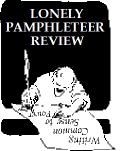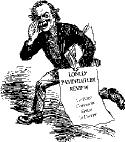
 |
 |

| Tuesday, April 23, 2024 |
Miles from the Mainstream |
D.
R. ZUKERMAN, proprietor |
"Massacre" Fakery at
The New York Times
May 19, 2017 -- When The New York Times prints a column called "The Massacre That Wasn't, and a Turning Point for 'Fake News,'" the column is not questioning use of the term Saturday Night Massacre --surrounded, or not, with quotation marks. The February 6, 2017 Times column by Jim Rutenberg carried that headline with reference to a comment from Kellyanne Conway about a "'Bowling Green Massacre.'" Rutenberg pointed out that "there was no massacre" at Bowling Green. He continued, "No one died. No one even stubbed a toe." Mr. Rutenberg explained that "Bowling Green Massacre" referred to the arrest and conviction of two refugees from Iraq "for plotting to send money and weapons to Al Qaeda in Iraq from their new homes in Bowling Green [Kentucky]." Mr. Rutenberg remarked, in part, "The Bowling Green episode made such a splash because it played directly into concerns that the Trump administration would use untrue assertions to rally support for its agenda while denigrating as 'dishonest' all the valid reporting pointing out the falsehoods." I have never seen a New York Times column that criticizes the term Saturday Night Massacre which re-appeared in the May 10 Times -- with and without quotation marks -- on the front page, in a page A19 headline, and in the last paragraph of the lead editorial, "The Firing of James Comey" as follows: "The obvious historic parallel to Mr. Trump's action was the so-called Saturday Night Massacre in October 1973, when President Richard Nixon ordered the firing of the special prosecutor investigating Watergate, prompting the principled resignations of the attorney general and his deputy." |
Clearly, the The New York Times, in its May 10 edition, did not apply the Rutenberg test -- inquiring if anyone stubbed a toe, much less died, of an October 1973 night in Washington, D.C. -- to Peter Baker's front-page "News Analysis, to the Matthew Haag news story on page A19, "A Flashback to a Director's Firing in 1993, and to the Saturday Night Massacre in 1973," or to its lead editorial on the Comey dismissal. Why not? Why is it perfectly acceptable to apply the term Saturday NIght Massacre to the resignations of Elliot Richardson and William D. Ruckelshaus and the dismissal of Archibald Cox -- and, now, to dredge up the term against President Donald J. Trump? Apparently, as applied by the left to a Republican president, the word massacre can never have an invidious connotation, carrying the intent to rally support for early termination of a Republican president's constitutional term in office. This is to recommend that Republican members of Congress, before they fall for the leftist agenda and agree to name a prosecutor to railroad the end of the Trump presidency, answer two questions suggested by Jim Rutenberg: Who died in the Saturday Night Massacre? Who, on that occasion, even stubbed a toe? If their answer is "'No one died. No one even stubbed a toe.'" -- they should reject the left's anti-Trump propaganda and resume consideration of the Trump agenda.
|
|

